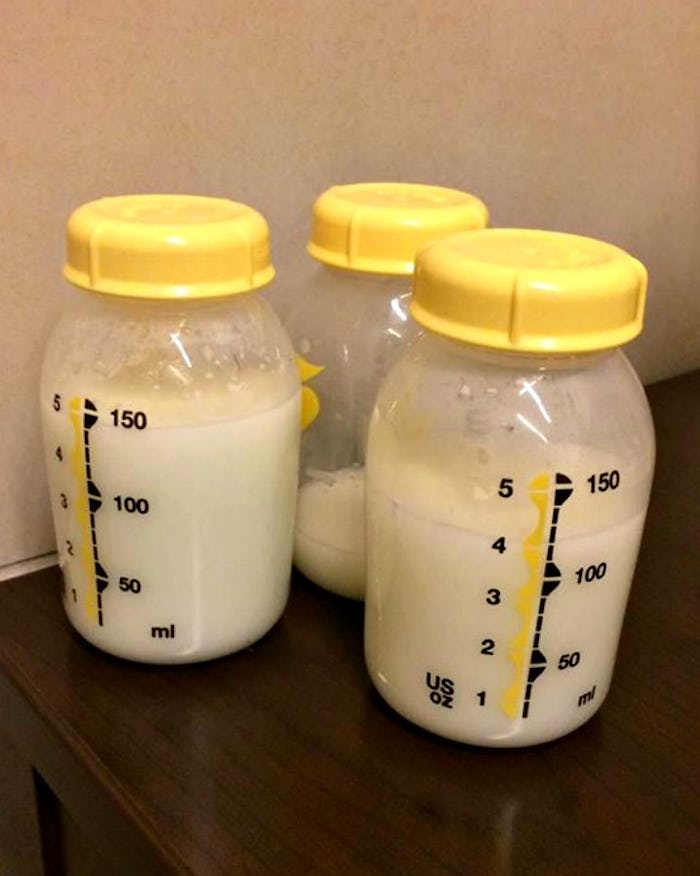Life

How To Warm Refrigerated Breast Milk So It's Ready For Baby
Whether you are thawing out your frozen milk or you pump and immediately store your milk in the fridge, there will likely come a time when you will need to learn how to warm refrigerated breast milk. Some moms are blessed with those rare, super easy-going babies that will drink milk straight from the refrigerator. But most babies are used to their mamas' body heat, and will only drink warm milk as a result. That being said, heating your breast milk in an improper fashion can cause it to lose some essential vitamins and minerals, so it is important to always follow proper warming guidelines.
According to La Leche League International (LLLI), in order to warm refrigerated breast milk, you should hold the container of milk under warm running water for several minutes until it reaches the desired temperature. You can also immerse the container in a pot or bowl of water that has been heated on the stove. Dr. Juliet Baciocco Spurrier, a pediatrician, mother of two, and founder of BabyGearLab advised heating your breast milk no warmer than body temperature which is about 98.6 degrees Fahrenheit or 37 degrees Celsius. You should never heat breast milk directly on the stove or put it in the microwave.
If you've thawed frozen breast milk in the fridge, you may notice that the fat has separated. Gently swirl to mix it rather than shaking it, and do the same once you've warmed up the milk. According to Breast Feeding Place shaking your breast milk denatures its molecules and breaks the proteins up into parts. The proteins need to remain intact in order to help to protect the lining of babies gut.
As a new mom, it is not uncommon to hear veteran moms proclaim that they've always heated breast milk in the microwave or directly on the stove, or have always vigorously shaken their milk and their babies turned out just fine. And, while they may not necessarily harm your baby, the Centers For Disease Control and Prevention (CDC) warned that these practices can destroy the nutrient quality of the expressed milk, which ultimately defeats the purpose of breastfeeding.
A bottle warmer that has been approved for use with breast milk is another way you can warm up your refrigerated milk. Spurrier warned, however, that some bottle warmers expose breast milk to temperatures high enough to result in significant loss of nutritional and immunological value. Therefore, you should look for bottle warmers that are specifically designed to avoid overheating.